How to Simplify Your Daily Routine for a Minimalist Life
Category: Lifestyle
Simplify Your Day for More Clarity and Joy
If you’ve found yourself overwhelmed by a packed schedule and constant mental clutter, you’re not alone. Many of us aspire to live more simply but struggle to find practical steps that truly work. Whether you’re new to minimalism or have already begun decluttering your life, simplifying your daily routine can transform your day-to-day experience, making space for what truly matters. This post is designed specifically for individuals seeking a clear, actionable guide to streamline their habits, reduce decision fatigue, and embrace intentional living.
You landed here because you want straightforward strategies—not vague advice—that help create more time and mental clarity without adding complexity. We understand that your time is precious and that simplicity isn’t about doing less—it’s about focusing better. Unlike many generic articles, this guide distills proven methods from leading minimalism and productivity experts into a logical, manageable path tailored to your lifestyle. Expect practical tips on prioritizing tasks, minimizing distractions, and establishing routines that foster calm and fulfillment.
Read on to uncover how to structure your days for greater ease and purpose, setting the groundwork for lasting change and a simplified life.
- Simplify Your Day for More Clarity and Joy
- Identify Your Daily Priorities
- Create a Morning Routine That Sets the Tone
- Streamline Your To-Do List
- Minimize Decision Fatigue with Simple Strategies
- Declutter Your Digital Space: Tips to Simplify Your Digital Life
- Implement Time Blocking and Scheduling for Focused Flow
- Adopt Mindfulness and Intentional Breaks: Recharge and Avoid Burnout
- Establish Evening Routines for Better Rest
- Simplify Your Environment: Create a Calm, Minimal Workspace and Living Area
- Evaluate and Adjust Your Routine Regularly
Identify Your Daily Priorities
Simplifying your daily routine starts with clearly identifying your true priorities. Not every task on your to-do list deserves your time and energy—learning to distinguish between what truly matters and what can be minimized or eliminated is a cornerstone of intentional living. Begin by assessing your daily activities through the lens of impact and meaning. Ask yourself:
- Which tasks contribute directly to my long-term goals or core values?
- What activities bring me fulfillment or growth?
- Which obligations simply fill time without adding value or joy?
Once you pinpoint the essential few, you can intentionally shift your focus toward meaningful activities. This practice reduces overwhelm and decision fatigue by cutting out unnecessary busyness and distractions. To maintain simplicity and clarity, consider using a priority matrix or a simple ranking system such as:
- Must-Do: Critical tasks linked to your personal or professional goals.
- Should-Do: Important but flexible activities that support your priorities.
- Could-Do: Non-essential activities or errands that can be deferred or delegated.
Consistently refining your priorities empowers you to build a daily routine that is aligned with your values, creating space for growth, rest, and genuine connection. By focusing only on what truly matters, you embrace a minimalist mindset that transforms your time management from chaotic to purposeful.
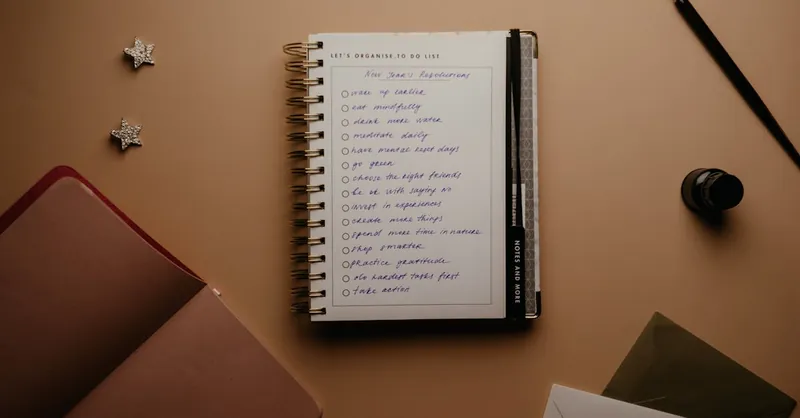
Image courtesy of Polina ⠀
Create a Morning Routine That Sets the Tone
One of the most powerful ways to simplify your daily routine and boost your overall well-being is by establishing a simple, intentional morning ritual. A thoughtfully designed morning routine acts as a foundation, setting a positive and calm tone for the day ahead. Instead of rushing from one task to another, a clear and consistent start helps reduce decision fatigue, increase mental clarity, and enhance productivity throughout your hours.
Why a Morning Routine Matters for Simplifying Life
When your mornings are chaotic or filled with overwhelming choices, the rest of your day often reflects that stress. Conversely, by dedicating time to a streamlined morning routine, you prioritize what truly matters right from the start. This practice not only helps ground your focus but also creates momentum that carries through your tasks, leading to more intentional, mindful actions instead of reactive busyness. Mental clarity in the morning can improve your decision-making, reduce anxiety, and invite a sense of calm that supports minimalism by encouraging mindful consumption—whether that’s information, breakfast, or your schedule.
How to Build a Minimalist Morning Routine
Start by removing unnecessary steps and focusing on activities that nourish your mind and body. Here are key elements of a simple, effective morning routine that cultivates clarity and intention:
- Wake Up at a Consistent Time: Regularity helps regulate your natural rhythm and reduces stress from rushed mornings.
- Hydrate and Nourish: Begin with a glass of water and a light, wholesome breakfast to fuel your energy gently.
- Practice Mindfulness or Meditation: Even 5 minutes of breath awareness or quiet reflection can clear mental clutter and enhance focus.
- Set Your Intentions: Write down or mentally note 1-3 achievable goals aligned with your daily priorities.
- Limit Screen Time: Resist checking emails or social media right away to preserve calm and avoid unnecessary distractions.
By keeping your morning routine minimal yet meaningful, you’ll cultivate a daily rhythm that supports productivity, reduces stress, and fosters a clear, focused mindset—all essential components of a simplified, intentional life. The intentional choice to start your day with purpose enables you to navigate challenges and opportunities with calm confidence, making the rest of your day more manageable and joyful.
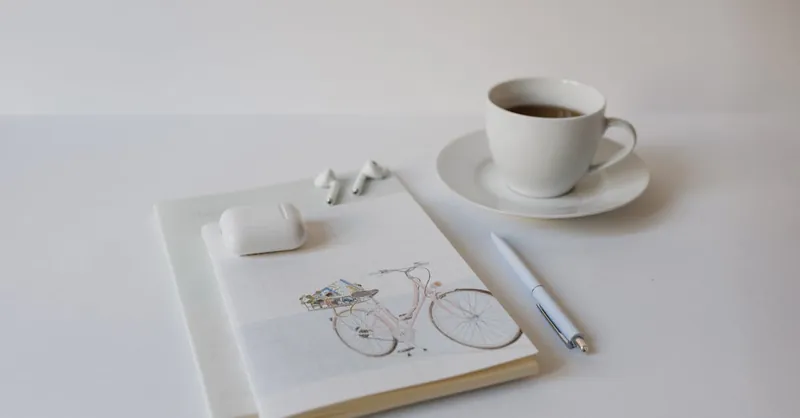
Image courtesy of Arina Krasnikova
Streamline Your To-Do List
An overloaded to-do list is a fast track to stress and overwhelm, robbing your day of simplicity and clarity. To truly simplify your daily routine, it’s essential to streamline your task list by making it achievable and focused. One of the most effective ways to do this is by grouping similar activities, setting time limits, and avoiding multitasking—all strategies that enhance productivity while preserving your mental energy.
Group Similar Tasks Together
Batching tasks that require similar tools, environments, or thinking modes reduces the constant switch in focus that drains your concentration. For example, dedicate a specific time block to answering emails, another for phone calls, and a separate period for creative work like writing or brainstorming. This approach minimizes disruptions and accelerates task completion, making your to-do list feel more manageable and less fragmented.
Set Realistic Time Limits
Assigning time boundaries to each group of tasks helps you avoid spending disproportionate amounts of time on any single activity. Use techniques like the Pomodoro Method—25 minutes of focused work followed by a short break—or simply allot fixed windows for different duties. Time limits create a sense of urgency that can boost efficiency while preventing your day from being consumed by low-impact tasks.
Avoid Multitasking to Maintain Focus
While it may seem like multitasking helps get more done, research shows it actually reduces efficiency and increases errors. Embracing a minimalist mindset means focusing on one task at a time, fully engaging with the moment and completing it before moving on. This single-tasking habit deepens concentration, reduces mental fatigue, and leads to higher quality results.
By applying these techniques—grouping related tasks, implementing clear time limits, and rejecting multitasking—your daily to-do list becomes a powerful tool for intentional living instead of a source of stress. A streamlined task list lets you focus your time and energy where it counts, contributing to a simplified lifestyle that fosters joy and mental clarity.
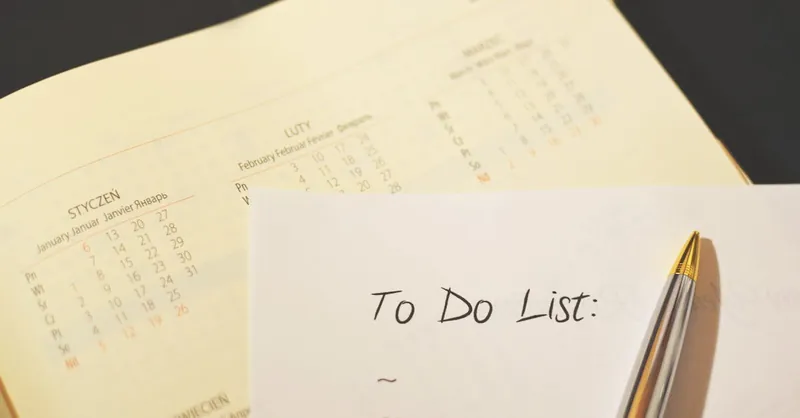
Image courtesy of Breakingpic
Minimize Decision Fatigue with Simple Strategies
One of the biggest hidden drains on your mental energy is decision fatigue—the exhaustion that comes from making too many small choices throughout the day. Simplifying your routine by automating repetitive decisions helps preserve your focus and mental clarity for the things that truly matter. Incorporating strategies like meal prepping, outfit planning, and automating daily choices reduces the mental load and creates a smoother, more intentional day.
Meal Prepping for Effortless Nourishment
Deciding what to eat multiple times a day can be surprisingly taxing. By dedicating time each week to meal prepping, you eliminate the stress of last-minute meals and enable healthier, more mindful eating habits. Prepare and portion balanced meals in advance so that your options are ready to go—this not only saves time but also reduces impulsive food decisions that may not align with your wellness goals.
Outfit Planning to Remove Morning Dilemmas
Choosing your outfit daily might seem minor, but it adds to decision fatigue, especially during busy mornings. Simplify by selecting your clothes the night before or creating a minimalist wardrobe capsule with versatile pieces that mix and match effortlessly. This practice frees up mental space in the morning and contributes to a more streamlined and intentional start to your day.
Automate Repetitive Decisions
Beyond meals and wardrobe, think about other daily decisions you can automate. This could mean setting up automatic bill payments, using subscription services for household essentials, or establishing fixed routines for common activities. By reducing the number of decisions you face repeatedly, you conserve mental energy and reduce stress, enabling you to focus your willpower on meaningful priorities.
Implementing these decision-minimizing strategies is a core pillar of minimalist living, allowing you to direct your cognitive resources toward creativity, relationships, and self-growth instead of exhausting trivial choices. Through thoughtful preparation and intentional automation, you cultivate a daily life that feels lighter, clearer, and more aligned with your values.
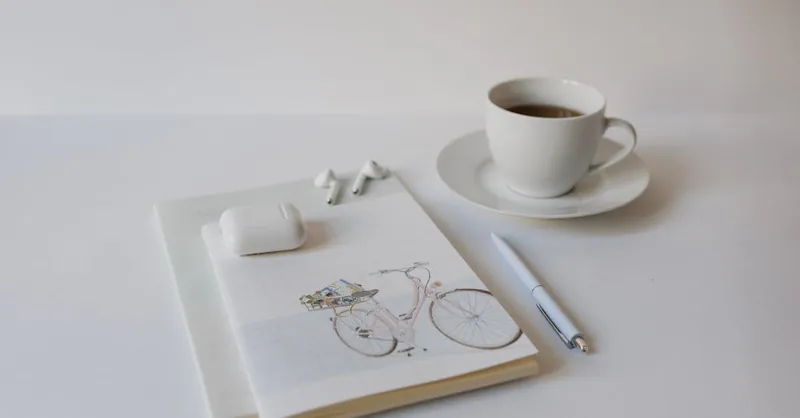
Image courtesy of Arina Krasnikova
Declutter Your Digital Space: Tips to Simplify Your Digital Life
In today’s hyper-connected world, our digital environments often become an unseen source of clutter and distraction that can undermine even the most intentional daily routines. Decluttering your digital space is a vital step toward simplifying life and regaining mental clarity. By managing notifications, achieving inbox zero, and organizing your online tools and apps, you create a streamlined digital ecosystem that supports focus and reduces overwhelm.
Manage Notifications to Regain Focus
Constant pings from social media, apps, and emails fragment your attention and increase stress. To simplify your daily routine, start by customizing notification settings:
- Turn off non-essential alerts: Disable notifications from apps that don’t require immediate attention, such as social networks or promotional messages.
- Use 'Do Not Disturb' modes strategically: Schedule focused periods during your day to prevent interruptions while working on priority tasks.
- Consolidate notifications: Enable summary alerts on mobile devices to receive grouped notifications at set times instead of constant pings.
Controlling notifications allows you to reclaim your attention and prevents digital distractions from derailing your intentional living efforts.
Adopt Inbox Zero for Email Simplicity
Email inboxes notoriously harbor digital clutter that generates anxiety and drains productivity. Embrace the Inbox Zero method to simplify how you handle emails:
- Set aside specific times for checking email rather than reacting to messages continuously.
- Unsubscribe ruthlessly from newsletters or promotions that no longer serve you.
- Use folders and filters to automatically sort incoming mail into categories such as “Action Required,” “Read Later,” and “Archive.”
- Reply, delegate, or delete promptly to prevent backlog and decision paralysis.
These habits will minimize the mental load caused by overflowing inboxes, keeping your digital correspondence manageable and aligned with your priorities.
Organize Your Online Tools and Apps
A cluttered digital workspace mirrors physical clutter and can subtly sabotage your focus. To simplify:
- Audit your apps and browser extensions regularly—remove those you rarely use or that don’t add value.
- Group similar tools together in folders or launchers to reduce search time.
- Streamline cloud storage by deleting duplicates and naming files consistently to enhance quick retrieval.
- Limit yourself to essential platforms that genuinely help with productivity, creativity, or connection rather than spreading yourself thin.
By cultivating a tidy digital environment, you create a calm, efficient space that encourages mindful engagement with technology instead of reactive consumption.
Taking control of your digital life through proactive decluttering directly supports a minimalist lifestyle, freeing mental space and energy to focus on what truly matters. A clear digital ecosystem not only reduces stress but also promotes greater digital wellness and intentional living every day.
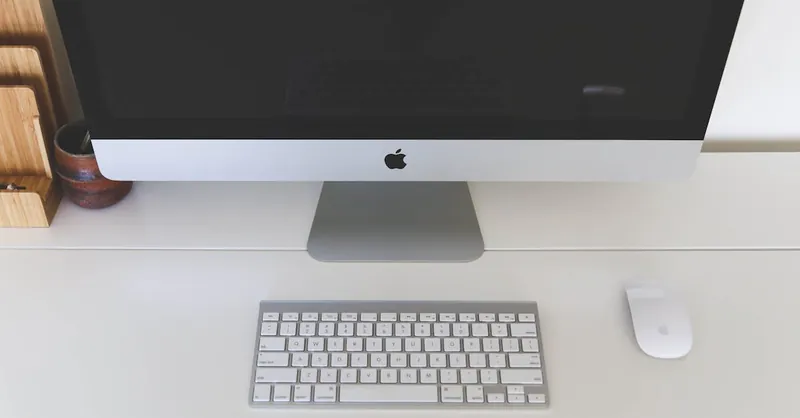
Image courtesy of Startup Stock Photos
Implement Time Blocking and Scheduling for Focused Flow
One of the most effective yet often overlooked strategies to simplify your daily routine is implementing time blocking and intentional scheduling. By allocating specific chunks of time to essential tasks, breaks, and leisure activities, you create a structured rhythm that enhances focus, reduces overwhelm, and fosters a seamless flow throughout your day. Time blocking allows your mind to fully engage with one activity at a time, eliminating distractions and decision fatigue caused by constant task-switching.
How to Use Time Blocking to Simplify Your Day
To begin, identify your key priorities—as outlined earlier—and assign dedicated time blocks to these activities on your calendar. Be realistic about how long tasks take and include buffer zones for unexpected interruptions or transitions. Incorporate scheduled breaks to recharge, as these periods are crucial for maintaining mental clarity and sustained productivity. A typical time-blocking schedule might look like this:
- Focused work period: 60–90 minutes dedicated to your most important or challenging tasks.
- Short break: 5–15 minutes for rest, stretching, or mindfulness to reset your focus.
- Secondary tasks: 30–60 minutes for administrative duties, communications, or follow-ups.
- Leisure or self-care: 30 minutes or more intentionally set aside to unwind and nourish yourself.
By consciously structuring your day in this way, you prevent tasks from spilling over and stealing mental energy destined for other priorities. Additionally, adhering to a schedule encourages discipline and consistency—key ingredients for minimalism in action.
Benefits of Time Blocking in Simplifying Life
- Improved Focus: Concentrating on one task within a dedicated time frame heightens productivity and quality of work.
- Reduced Decision Fatigue: Knowing what you will work on and when eliminates the stress of constant choices.
- Better Work-Life Balance: Scheduling leisure and breaks ensures you preserve time for rest and meaningful connections.
- Enhanced Flow and Satisfaction: Structured time creates momentum and a satisfying sense of accomplishment throughout your day.
Embracing time blocking as a core habit transforms your routine from a reactive scramble into a calm, intentional sequence of activities. This strategy aligns perfectly with the minimalist ethos: doing fewer things with greater intention, clarity, and joy.
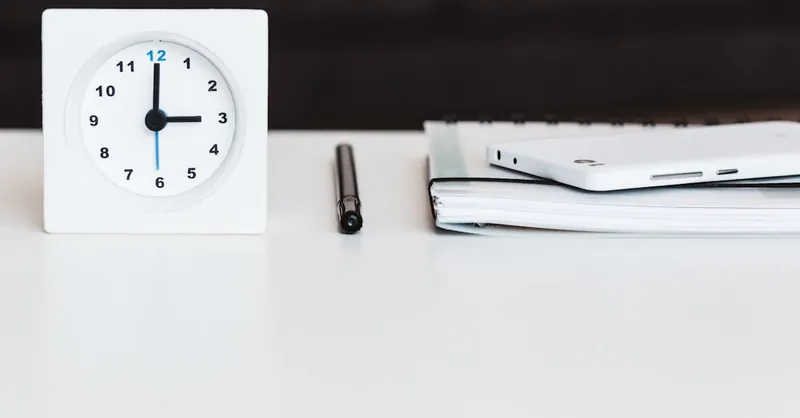
Image courtesy of freestocks.org
Adopt Mindfulness and Intentional Breaks: Recharge and Avoid Burnout
In the pursuit of a simplified daily routine, adopting mindfulness and intentional breaks is essential to sustaining energy, focus, and mental clarity. Mindfulness—the practice of being fully present in the moment—helps you cultivate awareness of your thoughts, feelings, and bodily sensations without judgment. When combined with thoughtfully scheduled pauses throughout your day, it prevents burnout, reduces stress, and enhances your ability to engage intentionally with your priorities.
Why Mindfulness and Breaks Matter for Simplifying Life
When life feels overwhelming, it’s often because we move through tasks on autopilot, disconnected from the present moment. This disconnection fuels mental clutter and emotional exhaustion, making even simple activities feel taxing. By incorporating mindfulness into your routine, you create space for clarity and calm, allowing you to approach your day with a centered mindset.
Similarly, intentional breaks are not downtime to be filled with distractions, but rather purposeful pauses to recharge your mind and body. These short intervals reduce cognitive overload, boost creativity, and maintain sustained productivity without sacrificing well-being. Instead of pushing through fatigue, these pauses reset your energy and enhance your focus, which aligns perfectly with a minimalist approach to living—doing less but with greater presence and purpose.
Practical Ways to Incorporate Mindfulness and Intentional Breaks
- Schedule Regular Breaks: Use techniques like the Pomodoro Method to include 5–10 minute mindful pauses after focused work sessions.
- Engage in Mindful Breathing or Meditation: Even a few minutes of deep breathing or guided meditation during breaks refreshes your nervous system and eases stress.
- Practice Single-Tasking Mindfully: While working on any task, gently bring your attention back to the present whenever distractions arise, reinforcing focus and reducing overwhelm.
- Create Screen-Free Moments: Step away from screens during breaks to rest your eyes and mind, promoting better mental clarity and reducing digital fatigue.
- Use Movement to Refresh: Incorporate gentle stretching or a short walk outside to invigorate your body and reconnect with your environment.
Integrating mindfulness and intentional breaks into your daily routine across work and personal time nurtures a sustainable rhythm that honors your mental and physical limits. This practice not only prevents burnout but also deepens your connection with the present, making simplicity feel natural rather than forced. Ultimately, these moments of pause and presence empower you to live with greater intention, balance, and joy—fundamental outcomes of embracing minimalism.

Image courtesy of Anna Tarazevich
Establish Evening Routines for Better Rest
A well-crafted evening routine is a powerful tool to simplify your daily life by promoting restful sleep and a calm mind. How you wind down after a busy day directly influences your ability to recharge and face the next day with clarity and energy. Establishing habits that reduce screen time, lower stimulation, and encourage relaxation supports restorative sleep, which is essential for maintaining focus, emotional balance, and productivity—key elements of a minimalist lifestyle.
Ways to Wind Down Effectively
- Set a Consistent Bedtime: Going to bed at the same time each night helps regulate your body’s internal clock and improves sleep quality, setting the tone for a predictable, peaceful evening.
- Create a Technology Curfew: Aim to turn off electronic devices at least 60 minutes before bedtime. The blue light emitted by screens suppresses melatonin production, making it harder to fall asleep. Instead, replace screen time with calming activities like reading a physical book, journaling, or gentle stretching.
- Develop a Relaxing Ritual: Engage in soothing pre-sleep routines such as drinking herbal tea, practicing mindfulness meditation, or taking a warm bath. These rituals signal your body that it’s time to unwind and prepare for rest.
- Keep Your Sleep Environment Minimal and Comfortable: A tidy, clutter-free bedroom with soft lighting and a comfortable temperature encourages relaxation and minimizes distractions during sleep.
- Limit Evening Stimulants: Avoid caffeine, heavy meals, and intense exercise close to bedtime, as these can disrupt your ability to fall asleep and achieve deep rest.
By reducing mental clutter and overstimulation in the evening, you create a peaceful transition into sleep that maximizes restorative benefits. This, in turn, simplifies your next day by boosting your energy, improving mood, and sharpening focus—helping you navigate daily priorities with less stress and greater purpose. Prioritizing a mindful evening routine is a fundamental habit for embracing minimalism, as it respects your body’s natural rhythms and nurtures holistic well-being.
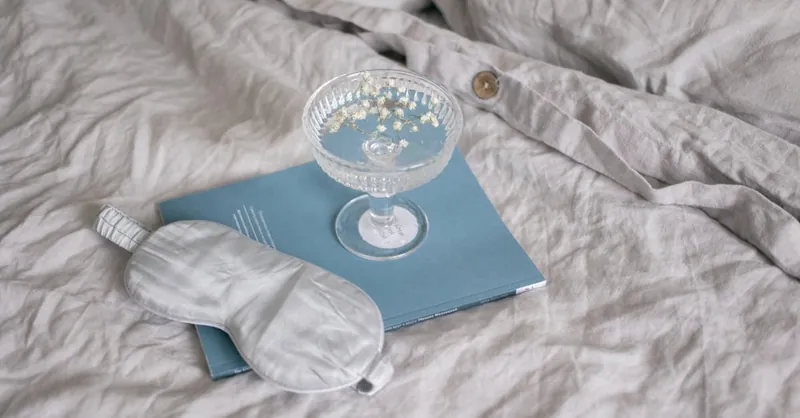
Image courtesy of KATRIN BOLOVTSOVA
Simplify Your Environment: Create a Calm, Minimal Workspace and Living Area
A cluttered environment can silently drain your energy and cloud your mind, making it harder to maintain focus, calm, and efficiency throughout the day. To truly simplify your daily routine, simplifying your physical surroundings is essential. A tidy, minimal workspace and living area not only support productivity but also cultivate a sense of peace that aligns perfectly with minimalist living principles.
Practical Tips to Maintain a Minimal Workspace
-
Clear Your Surfaces
Keep desks, countertops, and common areas free of unnecessary items. Limit yourself to essential tools and objects you use daily—such as a laptop, notebook, or a single pen holder. This reduction of visual clutter helps your brain focus on the task at hand rather than being distracted by disorganized surroundings. -
Adopt a One-In, One-Out Rule
To prevent accumulation, adopt the habit of removing one item when adding another. This simple strategy maintains balance and prevents your workspace and living areas from becoming overwhelming over time. -
Use Storage Wisely
Invest in functional storage solutions like drawers, bins, or shelves to keep items neatly tucked away. Label storage to easily find what you need without sifting through piles, which saves time and reduces frustration. -
Digitize Where Possible
Reduce physical clutter by going paperless. Scan documents, use digital calendars, and maintain electronic note-taking apps. This not only simplifies your space but also streamlines your workflow.
Cultivate a Minimal Living Area for Calm and Efficiency
- Focus on Quality Over Quantity: Choose furniture and decor that are both functional and meaningful, avoiding unnecessary decorative items that do not serve a purpose.
- Create Zones According to Function: Designate specific areas for work, relaxation, and dining. Keeping these areas distinct helps your brain associate different spaces with specific activities, enhancing mental clarity.
- Keep Daily Essentials Accessible: Arrange items you use frequently within easy reach to reduce daily friction and maintain a smooth flow between tasks.
- Incorporate Natural Elements: Introducing plants, natural light, or calming colors can significantly boost mood and reduce stress, reinforcing the serene atmosphere of a minimalist home.
By intentionally simplifying your environment, you set the stage for a calmer mind and more efficient day. This physical clarity mirrors the mental clarity you cultivate through prioritization and routine, creating a harmonious cycle that supports sustained minimalism and intentional living. Remember, simplicity in your surroundings translates directly to simplicity and focus in your daily life.
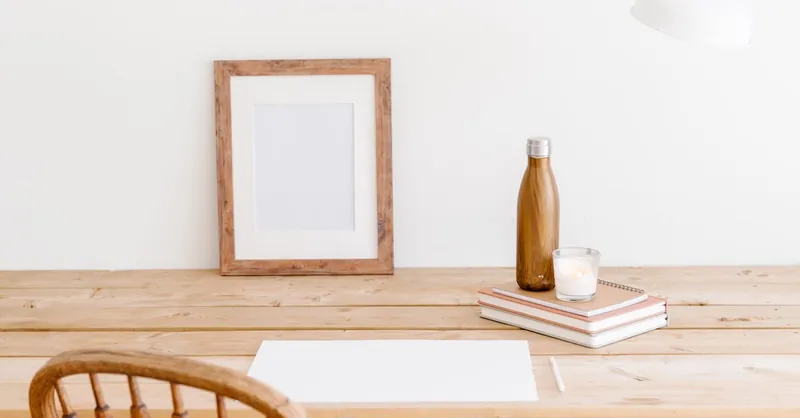
Image courtesy of PNW Production
Evaluate and Adjust Your Routine Regularly
Simplifying your daily routine is not a one-time task—it requires ongoing reflection and refinement to ensure that your habits continue to serve your evolving needs and priorities. By regularly evaluating what’s working and what isn’t, you create space for continuous improvement that sustains simplicity rather than allowing old patterns of overwhelm and clutter to creep back in.
Why Regular Reflection Matters for Simplifying Life
Life changes, priorities shift, and what once felt manageable may later become burdensome. Without consistent assessment, routines can become rigid or outdated, reducing effectiveness and causing frustration. A deliberate, scheduled reflection—whether weekly or monthly—helps you:
- Identify time-wasting activities or distractions that no longer align with your goals
- Recognize energy drains and adjust habits that contribute to burnout or decision fatigue
- Reinforce positive routines that enhance focus, calm, and intentional living
- Introduce new strategies or simplify further based on fresh insights or changing circumstances
This practice transforms your routine into a dynamic, adaptive tool that grows with you, preventing stagnation and promoting long-term minimalism.
How to Effectively Evaluate and Adjust Your Routine
- Set a Consistent Time for Reflection: Choose a regular interval—such as Sunday evening or the last day of each month—to review your daily habits and routines.
- Ask Targeted Questions:
- What tasks or habits brought me clarity and joy this period?
- Which activities caused stress or felt unnecessary?
- Are there routines that can be simplified, delegated, or eliminated?
- What new habits could support my priorities more effectively?
- Track and Record Insights: Keep a simple journal or digital note of observations and planned adjustments to monitor progress and avoid repeating patterns.
- Experiment with Small Changes: Implement one or two modifications at a time to test their impact without overwhelming yourself.
- Celebrate Wins: Acknowledge improvements, no matter how small, to stay motivated and reinforce your commitment to simplicity.
By embedding this cycle of reflection and adjustment into your lifestyle, you maintain a continuously evolving routine that supports genuine minimalism and intentional living. This mindful approach helps you embrace flexibility and self-awareness—key components for a clear, joyful, and simplified daily life.
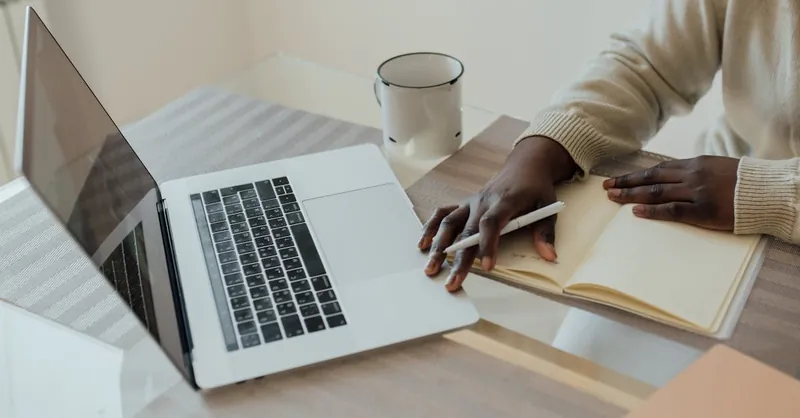
Image courtesy of Arina Krasnikova
